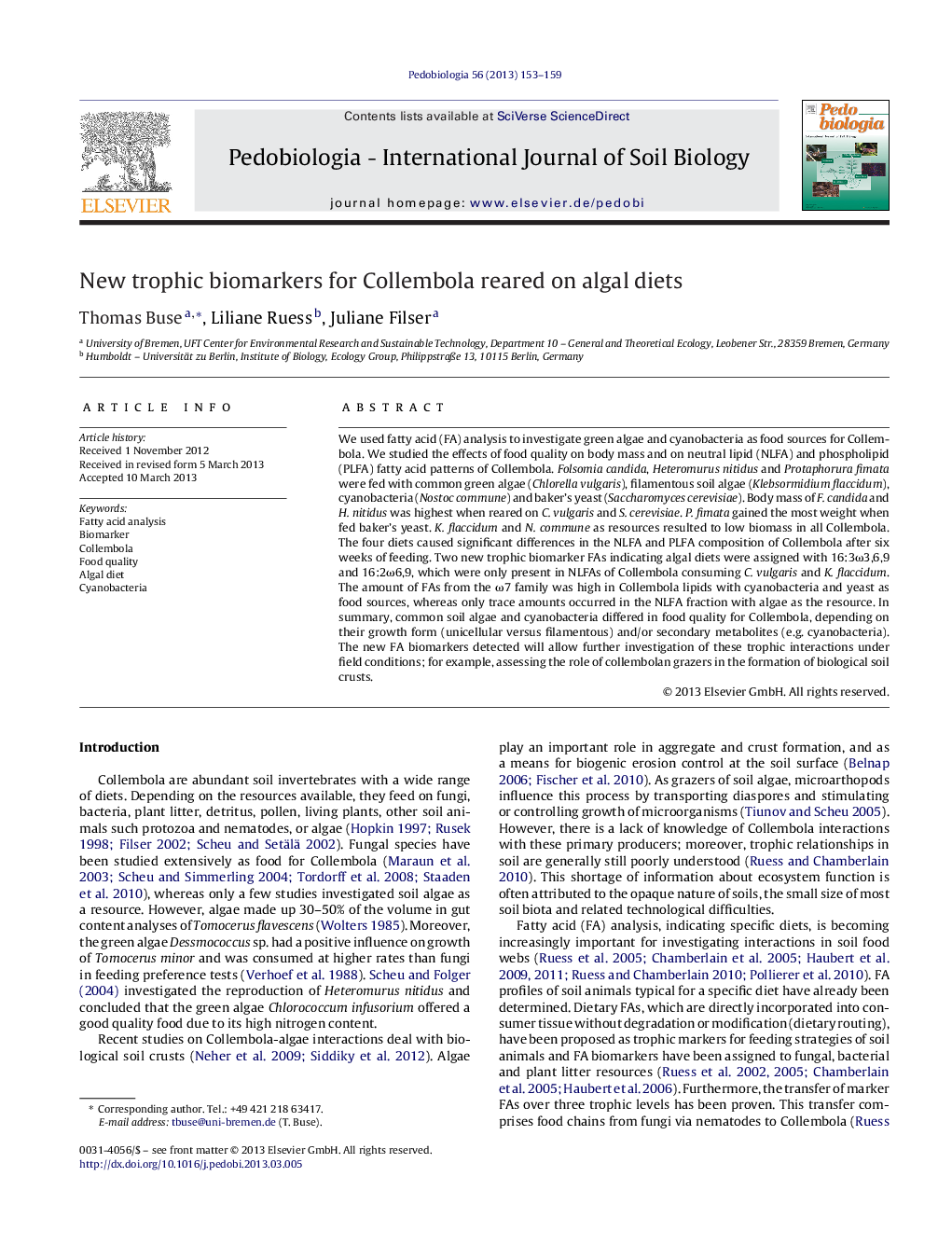| Article ID | Journal | Published Year | Pages | File Type |
|---|---|---|---|---|
| 2061076 | Pedobiologia | 2013 | 7 Pages |
We used fatty acid (FA) analysis to investigate green algae and cyanobacteria as food sources for Collembola. We studied the effects of food quality on body mass and on neutral lipid (NLFA) and phospholipid (PLFA) fatty acid patterns of Collembola. Folsomia candida, Heteromurus nitidus and Protaphorura fimata were fed with common green algae (Chlorella vulgaris), filamentous soil algae (Klebsormidium flaccidum), cyanobacteria (Nostoc commune) and baker's yeast (Saccharomyces cerevisiae). Body mass of F. candida and H. nitidus was highest when reared on C. vulgaris and S. cerevisiae. P. fimata gained the most weight when fed baker's yeast. K. flaccidum and N. commune as resources resulted to low biomass in all Collembola. The four diets caused significant differences in the NLFA and PLFA composition of Collembola after six weeks of feeding. Two new trophic biomarker FAs indicating algal diets were assigned with 16:3ω3,6,9 and 16:2ω6,9, which were only present in NLFAs of Collembola consuming C. vulgaris and K. flaccidum. The amount of FAs from the ω7 family was high in Collembola lipids with cyanobacteria and yeast as food sources, whereas only trace amounts occurred in the NLFA fraction with algae as the resource. In summary, common soil algae and cyanobacteria differed in food quality for Collembola, depending on their growth form (unicellular versus filamentous) and/or secondary metabolites (e.g. cyanobacteria). The new FA biomarkers detected will allow further investigation of these trophic interactions under field conditions; for example, assessing the role of collembolan grazers in the formation of biological soil crusts.
